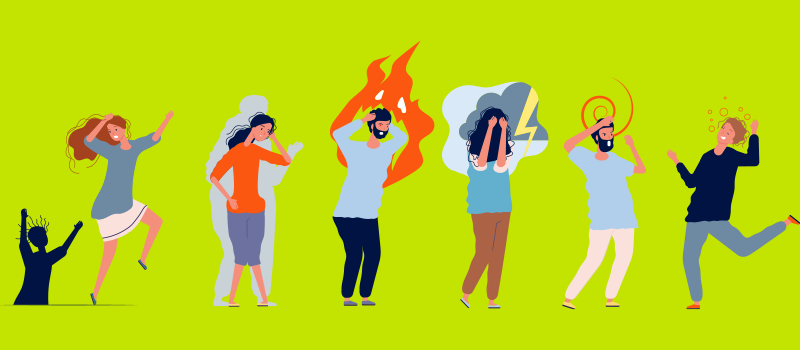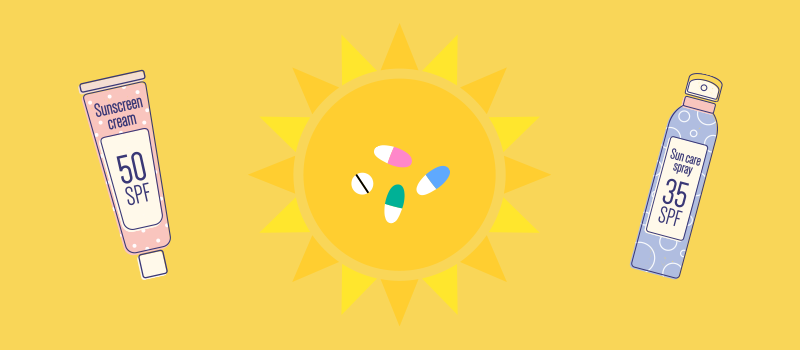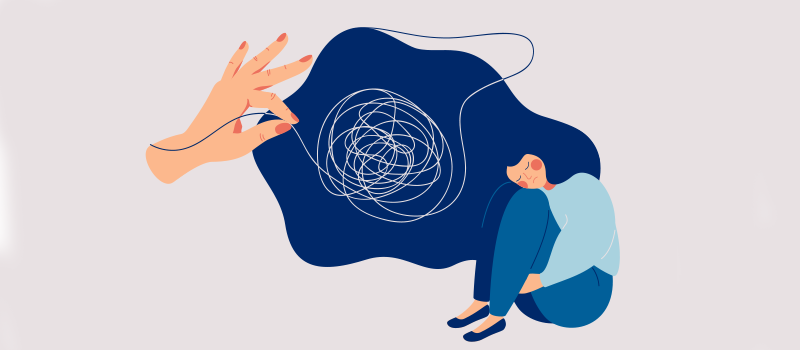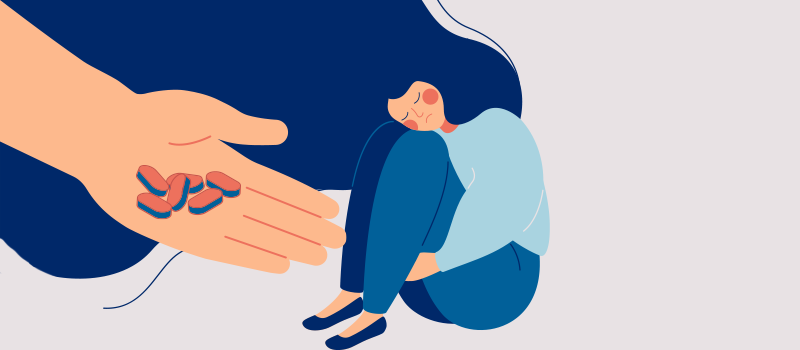What’s the Buzz
The Bee Healthy Blog
Panic Attack vs. Heart Attack: How to Tell the Difference

You're experiencing shortness of breath and some chest pain. Your heart begins racing, and you're sweating profusely. These symptoms are alarming, and the first thought that pops into your head might be that you're experiencing a heart attack.
Though this may be true, a heart attack isn't always the underlying cause of shortness of breath, chest pain, or a racing heart. In some cases, the actual culprit may be a panic attack. While both conditions share similar symptoms, a panic attack is far less life-threatening and requires a different management approach.
In this article, we'll explore how you can tell the difference between heart attacks and panic attacks and the most common symptoms associated with both conditions.
What is a panic attack?
According to the Diagnostic and Statistical Manual of Mental Health Disorders (DSM-V), a panic attack can be defined as a sudden increase in intense fear or discomfort that reaches its peak within a few minutes. Panic attacks trigger a fight or flight response and physical symptoms like sweating or shortness of breath even though there is no real or apparent danger.
Often, stress hormones trigger a panic attack. However, sometimes panic attacks happen without warning and can occur as often as a few times a day or as infrequently as a few times a year. For some individuals, panic attacks can significantly affect their quality of life and change how they function at work or in social settings.
A panic disorder may be diagnosed if a person has recurrent or frequent panic attacks. An individual with this diagnosis may persistently worry about having more panic attacks and may change their behavior to avoid situations that could be triggers for these attacks.
However, it's also important to note that experiencing panic attacks doesn't necessarily mean you have a panic disorder. Panic attacks can also occur in the presence of other medical conditions, such as a substance use disorder or anxiety disorder.
What are common panic attack symptoms?
Some panic attack symptoms include the following:
- Increased heart rate or heart palpitations
- Increased sweating
- Difficulty breathing
- Dizziness
- Chest pain
- Nausea
- Stomach pain
- Chills
- Trembling
- Numbness or tingling in hands
- Becoming detached from oneself (depersonalization)
- Feeling detached from reality (derealization)
- Feelings of overwhelming fear and anxiety
- Fear of losing control
- Fear of death
Panic attack symptoms typically last between 5 minutes and 20 minutes, but some individuals have reported episodes lasting up to an hour.
What happens during a heart attack?
A heart attack is a life-threatening medical emergency that requires immediate medical attention. Also known as a myocardial infarction, a heart attack occurs when the blood flow to part of your heart becomes blocked. As a result, part of the heart muscle does not get enough blood. The longer that this blood flow is blocked, the greater the damage to the heart muscle.
Most heart attacks are linked to coronary artery disease. In this condition, the coronary arteries supplying the heart are narrowed or blocked, typically due to the buildup of fatty deposits known as plaque.
What are common heart attack symptoms?
Some heart attack symptoms include the following:
- Chest pain or discomfort in the left side or center of the chest
- Pain or discomfort in the arms, back, jaw, neck, or shoulder blades
- Feelings of weakness and lightheadedness
- Shortness of breath
- Nausea and vomiting
- Unusual fatigue with no apparent cause
- Excessive sweating
A heart attack isn't always accompanied by these signs. In some cases, it can occur with mild symptoms or even no symptoms at all.
How can you tell the difference between a heart attack and a panic attack?
There are various ways you can tell the difference between a panic attack and a heart attack. It is crucial to tell them apart because both conditions require very different treatment approaches. Let's explore some of the main differences between both conditions.
The nature of the pain
Panic attacks tend to cause sharp, shooting, or stabbing pain. On the other hand, people describe a heart attack as more of an achy pain or pressure in the chest. You might also feel tightness and a squeezing or crushing sensation in your chest.
The location of the pain
The pain during a heart attack isn't always localized to the chest area. This pain or discomfort may also radiate to other parts of your upper body, including your jaw, arms, shoulders, and neck. In contrast, the chest pain you experience during a panic attack typically stays within the chest area.
How long the symptoms last
The symptoms of a panic attack usually last between 5 and 20 minutes. Once the symptoms subside, you'll feel better once again. However, the pain and symptoms associated with a heart attack can last a few minutes to several hours. Even at rest or after stopping any physical activity, the pain may persist. Some people might notice that the pain is continuous, while others experience discomfort that comes and goes.
When they occur
Panic attacks don't always have a trigger, and these episodes can occur at any time of the day. Heart attacks typically occur in response to physical exertion, like when you're mowing the lawn or climbing up a flight of stairs.
The at-risk population
Though there are some cases of heart attacks in people under the age of 40, they most often affect the older population. They are also more prevalent in those with heart-related conditions like high cholesterol or high blood pressure, as well as in people with diabetes and obesity. Meanwhile, panic attacks are less common in older adults than in the younger population. They are also more likely to affect those who have depression.
When to seek medical attention
A heart attack requires emergency care. If you experience what you believe are heart attack symptoms, don't ignore it and call for immediate medical attention. A heart attack can be treated with clot-dissolving medications, surgery, or a non-surgical procedure known as percutaneous coronary intervention (PCI). A panic attack isn't a medical emergency and is usually treated with psychotherapy and medications.
If you are worried about your chest pain or any other symptoms, it's best to play it safe and get your condition checked out by your healthcare professional to ensure you receive the medical treatment and support you need.
References
- https://www.ncbi.nlm.nih.gov/books/NBK430973/
- https://www.nimh.nih.gov/health/publications/panic-disorder-when-fear-overwhelms
- https://www.nhs.uk/mental-health/conditions/panic-disorder/
- https://www.nhlbi.nih.gov/health/heart-attack
- https://www.cdc.gov/heartdisease/heart_attack.htm
- https://www.sciencedirect.com/science/article/abs/pii/S0165032717321754











SOCIAL